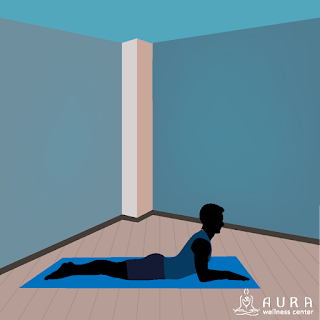By Kimaya Singh
Have you experienced neck and back pain after a long day of
sitting at home or at work? In the modern era, as we have increased the amount
of time we spend sitting at our computers at work or our televisions at home,
we have inadvertently placed increasing amounts of strain upon the skeletal
components in our necks and backs.
Prior to modern times, people simply did not spend so much of
their day in a seated position to develop these problems. Most people found
themselves working in jobs in industries such as agriculture that required
physical exertion or manual labor. During these times, people actually
exercised as part of their daily work duties. In contrast, many people today do
work at their desks on computers or by standing all day, often in the same
position, and do not have the opportunity to exercise.
One consequence of prolonged sitting or standing in the same
position for most of the day is that the spine becomes compressed. This means
that strains develop in and in between the discs of the spine, which can create
discomfort. Causes for this discomfort certainly include the natural water loss
in the spinal column but also the force of gravity that ultimately causes the
process of thinning between the discs in the spine. Discs serve as cushions between
the vertebrae and when they become strained, the body experiences stiffness,
nerve problems and actual pain if the condition is not addressed in some way.
This condition is what is known as spinal compression.
Although the process of spinal compression is a natural
consequence of ageing and of sitting for prolonged periods of time, the
condition can readily be addressed through the use of yoga exercises. These
exercises can help to pump the spinal discs back up and to bring needed water
supplies back into the discs for a healthier back and neck. The following are
just a few typical stretches and exercises that can be used to achieve more
optimal spinal disc health.
Fortunately, we can use yoga exercises that have existed for
thousands of years to decompress our spines. Assuming that yoga exercises are
done correctly, they all in some way help to alleviate spinal compression and
its symptoms. Please consult your physician prior to using yoga exercises to
treat spinal compression.
Cat Stretch
Particularly effective in treating problems in the lumbar region
of the spine, the Cat Stretch helps to relieve pressure. Sitting, facing
forward, and resting your body on your knees and elbows initiate this move.
Once you are in that position, use your abdominal muscles to arch your lower
back upward. After you have arched as high as possible, remain in that position
for approximately 20 seconds and then return to normal. Repeat as often as
desired.
Knees to Chest Repetitions
Doing the Knees to Chest Pose relieves compression in the lumbar
spine and in the discs. This exercise is fairly simple in that you begin by
lying on your back in Shavasana. Slowly raise your knees up toward your chest
and use your arms to grab hold of the shins. Take deep breaths while bringing
your knees as close to your chest as possible with your arms and hands. A
blanket could elevate your head, while your tailbone could also be slightly elevated
by the nature of the pose. Hold this position for ten seconds and return to the
starting position. Repeat ten times.
If you repeat these exercises along with many other decompressing
yoga poses, you should experience noticeable benefits, one of which is the
surprising feeling of being taller! Your sense of coordination, balance, and
flexibility will all be enhanced by regular yoga practice. The back pain you
once experienced will quickly disappear as you use yoga to decompress your
spine.
© Copyright - Aura Wellness Center – Publications Division
See our testimonials to find out what our graduates have to say about our selection of online teacher certification courses.
Please feel free to share our posts with your friends, colleagues, and favorite social media networks.







